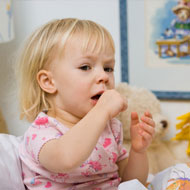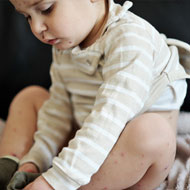- Toddler Measles Symptoms
- Toddler Flu Treatment
- Toddler Flu Symptoms
- Toddler Stomach Flu Symptoms
- Toddler Hair Loss
- Toddler Urinary Tract Infection Symptoms
- Toddler Tonsillectomy Recovery
- Toddler Periorbital Cellulitis
- Toddler Vomiting and Diarrhea
- Types of Toddler Vomiting
- Toddler Vomiting Treatment
- Toddler Cough Vomit
- Toddler Dandruff
- Toddler Bowlegs
- Toddler Eye Infection
- Toddler Pink Eye
- Toddler Pink Eye Symptoms
- Toddler Eye Problems
- Toddler Hearing Loss Signs
- Symptoms Of Pinworms In Toddlers
- Toddler Blood Infection
- Toddler Mononucleosis
- Toddler Motion Sickness
- Toddler Labial Adhesion
- Lyumphoma in Toddlers
- Toddler Scabies
- Toddler Pinworms
- Toddler Insect Bites
- Toddler Meningitis
- Toddler Moles
- Toddler Lyme Disease
- Toddler Nosebleeds
- Toddler Ingrown Toenail
- Toddler Lead Poisoning
- Toddler Hair Loss Alopecia Areata
- Toddler Heat Stroke
- Toddler Rubella
- Toddler Tonsillectomy
- Toddler Iron-Deficiency Anemia
- Toddler Tooth Discoloration
- Toddler Concussion
- Toddler Psoriasis
- Toddler Sunburn
- Toddler Tongue Blisters
- Toddler Impetigo
- Toddler Blepharitis
- Toddler Burns
- Toddler Burn Treatment
- Toddler Eczema Face
- Toddler Eczema Symptoms
- Toddler Urinary Tract Infection
- Toddler Boy Urinary Tract Infection
- Toddler Epilepsy
- Toddler Epilepsy Symptoms
- Toddler Walking Pneumonia
- Toddler Yeast Infection Symptoms
- Toddler Hand Foot And Mouth Disease
- Toddler Dry Scalp
- Toddler Dry Skin
- Toddler Strep Throat
- Toddler Strep Throat Symptoms
- Toddler Sore Throat
- Toddler Mumps
- Toddler Bacterial Infection
- Shaken Baby Syndrome
- Shaken Baby Syndrome Symptoms
- Toddler Tonsillitis
- Toddler Eye Discharge
- Toddler Fifth Disease
- Toddler Febrile Seizures
- Toddler Food Poisoning
- Toddler Gingivostomatitis
- Toddler Stomach Ache
- Toddler Warts
- Toddler Tuberculosis
- Toddler Torticollis
- Toddler Tick Bites
- Toddler Ear Infection Remedies
- Toddler Ear Infection Symptoms
- Toddler Ear Infection Signs
- Toddler Concussion Signs
- Toddler Bronchitis
- Toddler Colds
- Toddler Chicken Pox
- Toddler Appendicitis
- Toddler Asthma
- Toddler Birthmarks
- Toddler Strabismus
- Toddler Wheezing
- Toddler Sprains
- Toddlers Tinea Versicolor
- Toddler Viral Infection
- Toddler Yeast Infection
- Toddler Hives
- Toddler Canker Sores
Symptoms & Prevention Of Frostbite In Toddlers
Frostbite is referred to as damage of the body tissues caused by exposure to extreme cold. In fact, frostbite may be colloquially referred to as freezing of the skin. Severe frostbite may cause permanent damage.
Small babies and toddlers are more susceptible to frostbite than adults because heat loss from their skin occurs at a comparatively faster rate. The risk of frostbite in toddlers increases when the temperature is below 32 °F, especially when it is windy.
The affected area of frostbitten skin becomes white and waxy with a sensation.
p.of numbnesss The fingers and toes become stiff or begin to swelll In its first stage frostbite affects the skini In the last stages it penetrates deep inside, affecting the musclese In extreme cases, even bones may get affectede Immediate medical attention is required in such casese
Prevent Toddler Frostbite
You can prevent your toddler from frostbite in extreme cold weather by dressing him (or her) in layers before going outu Dressing in layers provides more thermal insulation, thereby preventing heat loss from the bodyd Before going out in the cold, feed your baby with a high-calorie meal, as more calories are required to maintain the body temperaturer
Signs of Toddler Frostbite
If you find signs of frostbite on your toddler, take immediate actiono You must go to a doctoro Until you manage to get your toddler to a doctor, the following treatment should be administered for toddler frostbite:
- Carry your baby to a warm environmentn Keep his ears covered with your handsd
- Try to walk in an area where the wind is blockede
The wind chill factor is as important as the temperaturer - Warm the affected areas against your body and press his palms under your armpitst
- If immediate medical care is unavailable, immerse the affected areas in warm water slightly above the body temperature (around 102 to 105 °F)F Continue adding the warm water to maintain the temperaturer Never use hot watere Remove the affected area from water after the skin returns to its normal coloro
- Do not apply direct heat using a heater, heating pad or hot air blowere This practice can worsen the damage to skin tissuese
- Do no rub the affected skini
- Re-warming the skin causes a burning sensationo The skin may turn red or blue with blistersr
- After re-warming wrap the affected areas in a blanket to prevent refreezingn
- Wrap the toes and fingers by warm cloth strips such that each toe or finger is separated from each othere
- Give your toddler warm fluids such as warm milk or watere


